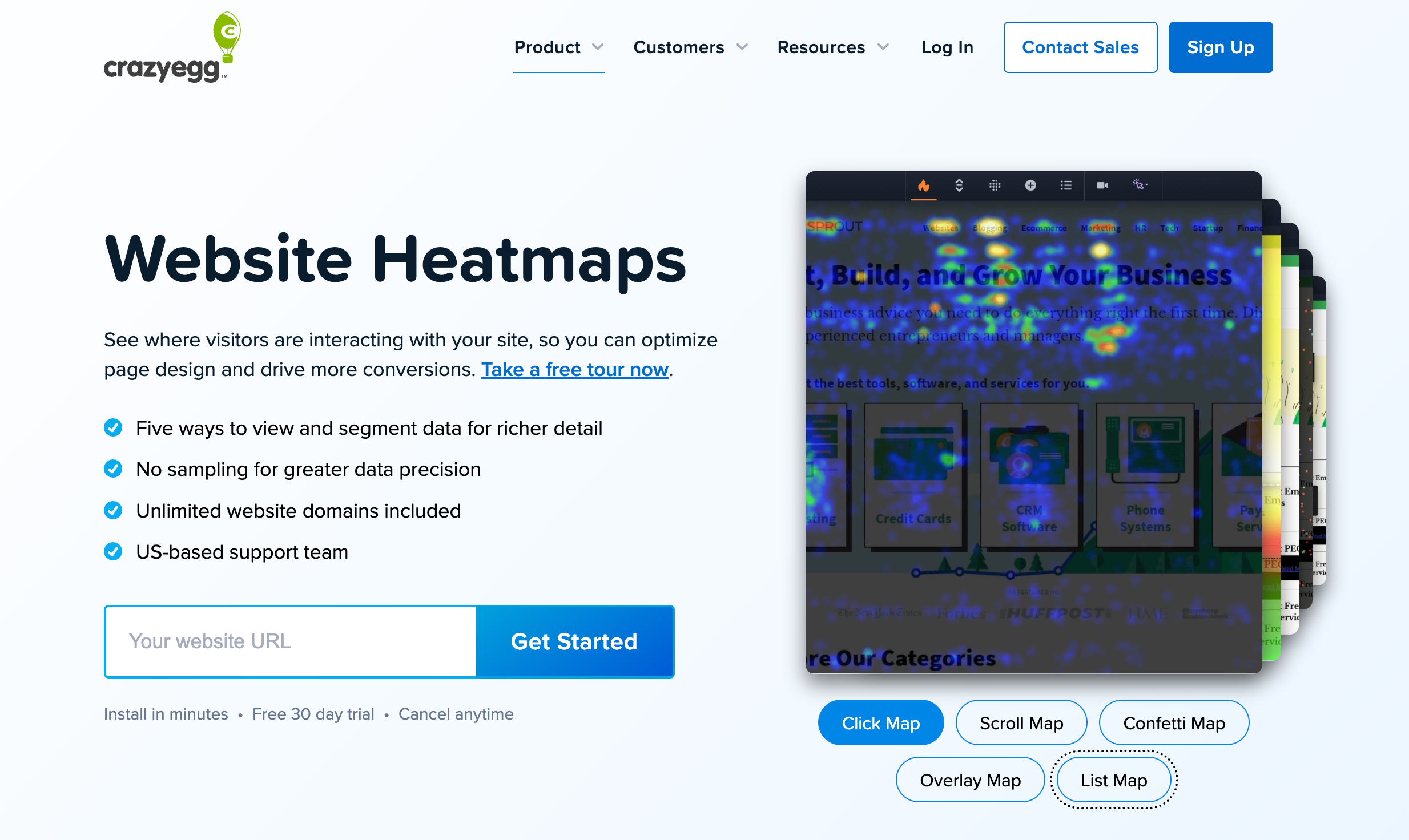Some people research for weeks before they buy. Others make up their mind in seconds.
Great salespeople recognize the patterns and adapt to each type of buyer.
Your website? It can’t adapt on the fly. But you can build a similar flexibility into its structure and messaging so that your site helps each buyer find what they need.
Overview of the 4 Types of Buyers
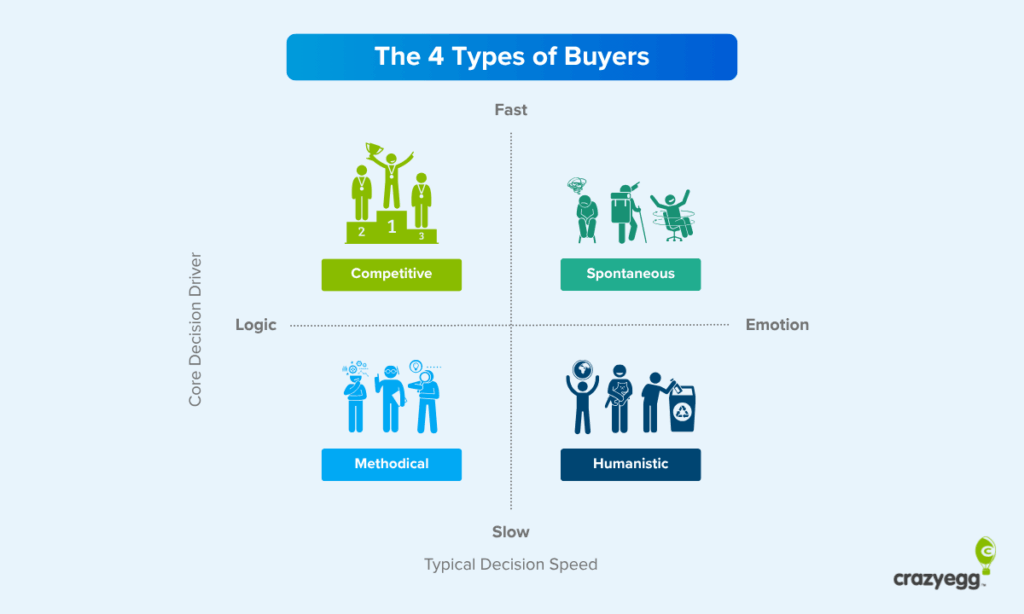
The breakdown of buyer types we’re going to use was first laid out by Bryan and Jeffrey Eisenberg in their 2006 book Waiting for Your Cat to Bark.
In their book, the Eisenbergs explained how marketers need to adapt now that people are using the internet to discover brands and decide to buy. The traditional approaches that worked in the age of mass media just don’t work in the digital age.
One of the most enduring insights they shared in the book was the 4 types of buyers. While every person is unique, they showed that decision-making patterns could be distilled into four discrete types: competitive, methodical, spontaneous, and humanistic.
Understanding these types helps brands anticipate how customers frame their decisions, and then align their marketing efforts with how people naturally buy.
Let’s take a closer look at the 4 types of buyers identified by the Eisenbergs:
| Buyer Type | Key Drivers | Frequency |
|---|---|---|
| Competitive | Speed, logic, efficiency, achievement, recognition | 5-10% |
| Methodical | Logic, thoroughness, research, truth | 45% |
| Spontaneous | Speed, emotion, excitement, adventure | 25-30% |
| Humanistic | Social impact, connection, trust, helping others | 10-15% |
The framework draws on Myers-Briggs personality theory, which describes how people perceive information. Some are concrete and detail-focused (sensing), whereas others tend to see patterns and possibilities (intuition). There’s another big difference between those who process logically (thinking) versus those who process emotionally (feeling).
These ways of seeing the world shape buying behavior. The person who perceives through sensing and thinking needs data and proof. The person who perceives through intuition and feeling needs to trust you and believe in what you’re doing.
Understanding these patterns lets you structure your website and campaigns to accommodate different buying styles.
Design a landing page so competitive buyers see proof above the fold. Add detailed product pages for methodicals. Create urgency for spontaneous buyers. Share your mission for humanistic buyers.
Each type finds what they need without requiring separate experiences.
Why use these 4 types of buyers?
Yes. I’m sticking with a book written two decades ago because it’s the only framework of its kind that actually gets at how people make buying decisions.
Importantly, their framework for buyer types does not require you to talk to prospective buyers. There are some great buyer frameworks out there for sales training, but they assume you are going to be in dialogue with buyers, which is hardly a given for digital marketers.
Most of the other frameworks out there are even less useful. They are focused on who people are, how much money they have, their risk appetite, and other factors that are important if you are trying to figure out who you should sell to.
But you don’t really want to use someone else’s framework for that. It’s not hard to define your target market or build a buyer persona that captures the traits of customers who are likely to need your product.
Target markets and buyer personas are always unique to your brand, and using someone else’s framework is going to cause more harm than good.
The Eisenberg framework is rooted in something much more fundamental: how people make decisions. It’s not about who they are, but how they see the world, and how that perception shapes the decisions they make in a digital environment.
And once you understand these patterns, you can coordinate your marketing efforts so that each type of buyer finds what they need to convert.
You can’t force people to change how they make decisions. It’s like, as the title says, waiting for your cat to bark. It’s not going to bark, and no amount of marketing or salesmanship is going to change that.
Let’s go through each type of buyer in depth, and what they need to find on your site in order to feel confident making a purchase.
Type 1: Competitive Buyers
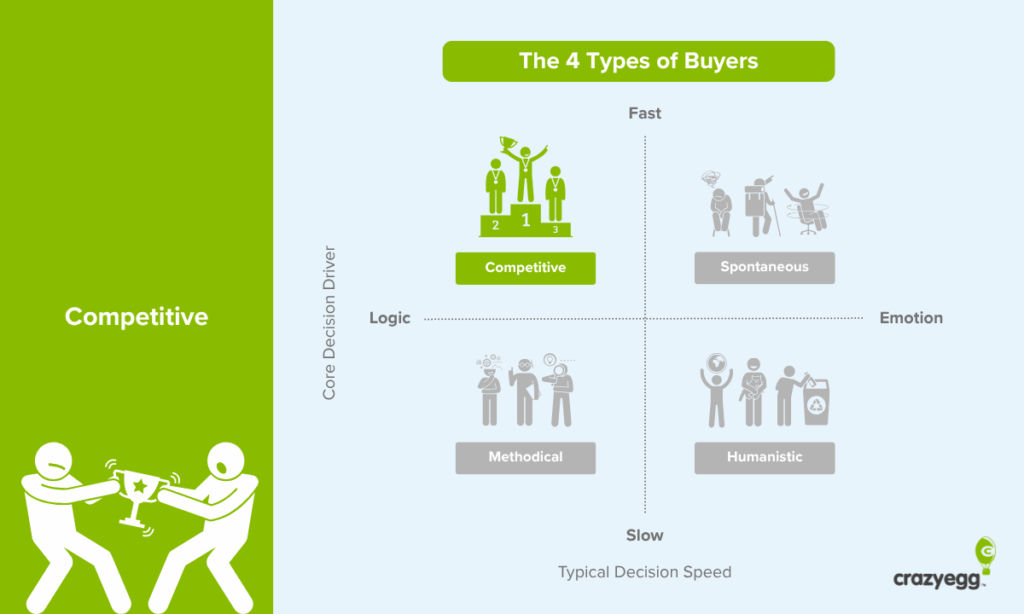
Competitive buyers demand a lot of themselves and others. They want to see competence, are driven by achievement, and they like to be in control.
These are the people who like to act quickly and decisively. They see speed as an advantage, and tend to accept a little bit of risk in the service of winning. They’d rather act fast and learn from experience than overthink a decision or get stuck in analysis paralysis.
Although competitive buyers only represent about 5-10% of the market, they often have the highest customer lifetime value of any type.
What competitive buyers care about:
- Do you offer the provably best option for their needs?
- What specific advantages does your product have over competitors?
- How fast can they be up and running?
- What about your product will slow them down?
Competitive buyers value logic over emotion, proof over promises, and efficiency over hand-holding. Recognition and status matter to them. They want to know that this purchase will put them ahead of others.
How to sell to competitive buyers:
Use confident, clear language that positions your brand as the best possible option and provide proof immediately.
Emphasize:
- Achievement and winning language
- Superlatives backed by proof: best, fastest, highest-rated
- Concrete competitive advantages with impressive metrics
- Third-party validation from recognizable brands
- Clear differentiation from competitors
- Speed and efficiency or setup/deployment
Avoid:
- Storytelling
- Emotional appeals
- Preamble or backstory
- Evidence-free claims
- CTAs like “Learn more” or “Explore”
Real-world example of selling to competitive buyers:
Let’s look at the home page of Gong, a revenue intelligence platform designed for sales leaders, who tend to be a very competitive bunch. Gong has a high valuation and strong revenue growth, which signals that their marketing is on the right track.
A quick look at their homepage, and you can see how it speaks directly to competitive buyers in a crowded market.

- Headline: “The #1 AI operating system for Revenue Teams”
- Subhead: “Built to help your revenue team crush goals, close with confidence, and keep growing — ring the gong, deal after deal, quarter after quarter.”
- CTA: “See it in Action”
The large headline positions Gong as the leader in its product category, and the subhead builds on this idea by saying it helps teams “crush goals, close with confidence, and keep growing.”
This language speaks directly to the mentality of people who like to win, and the CTA invites them to immediately see proof of claims immediately.
Once you click, you are brought directly to the Gong interface, which is blurred behind a headline, subhead, and signup box.
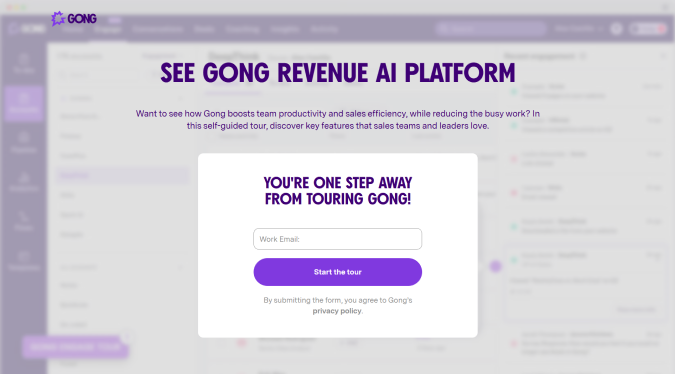
The compelling headline aligns perfectly with the CTA: users will be able to see the actual platform in action. The interface is right there, and it promises to deliver what people want to see. All you have to do is enter your work email, which introduces as little friction as possible.
For buyers who care about speed and proof, this is an excellent experience.
Type 2: Methodical Buyers

Methodical buyers are driven by thoroughness and accuracy. They want to be sure that they are making the objectively best decision with the most accurate information possible.
They need to feel prepared and organized in order to make a decision. In other words, these are the people who do their homework. They read reviews, compare features, download whitepapers, and verify claims before committing.
Methodicals are uncomfortable making quick decisions and see research as a way to decrease risk. They’d rather take extra time than make the wrong choice, and are constantly on the lookout for information that doesn’t match with what they know.
What methodical buyers care about:
- Do they have access to all relevant information?
- Can they verify all claims?
- How does your product compare objectively to alternatives?
- What are the potential risks and downsides?
Methodical buyers value accuracy, completeness, and transparency. They’re skeptical of anything that feels like sales pressure or hype. If something doesn’t add up, they’ll walk away.
How to sell to methodical buyers:
Provide comprehensive, accurate information in an organized format. Never oversell or make claims you can’t support. Give them the tools to reach their own logical conclusion.
Emphasize:
- Hard data: percentages, statistics, research findings
- Detailed specs and feature breakdowns
- Trust signals from reputable third-parties: certifications, awards,
- Comparison charts
- Transparent pricing
- Clear documentation of process
- Long-form content
Avoid:
- Urgency and pressure tactics
- Vague claims without evidence
- Making information hard to find
- Hype
- Emotional appeals
Real-world example of selling to methodical buyers
Let’s look at the pricing page for Ahrefs, one of the most popular SEO tools on the market. Methodical buyers are going to dig deep into the pricing page to make sure that they know exactly what they are getting, what it’s going to cost, and to suss out any hidden fees.
Ahrefs does a great job going the extra mile to make everything as transparent and comprehensive as possible.

- The listed price is not a gimmick. You can toggle to see how much you save with an annual plan, but the monthly price is what’s listed. Many brands like to headline the promotional pricing in bold with the actual pricing either not listed, or listed in a smaller, less noticeable font.
- They list specific feature limits, not just the features included. Plus every feature includes mouseover text that provides further explanation of rules and links to more information.
- They list all of the features included, which also have mouseover text and links to more information.
- They also include mouseover videos, which provide an extra level of explanation for features like “projects” that require some explanation.
This is about as comprehensive of a SaaS pricing page as you are likely to see. You can answer almost any question you have about what a feature is, whether it’s included, and what the key limits are. Ahrefs makes it very easy to learn more and answer your own questions.
For methodical buyers who are used to gimmicky SaaS pricing, hidden costs, and unclear features, Ahrefs must feel like a breath of fresh air.
Type 3: Spontaneous Buyers
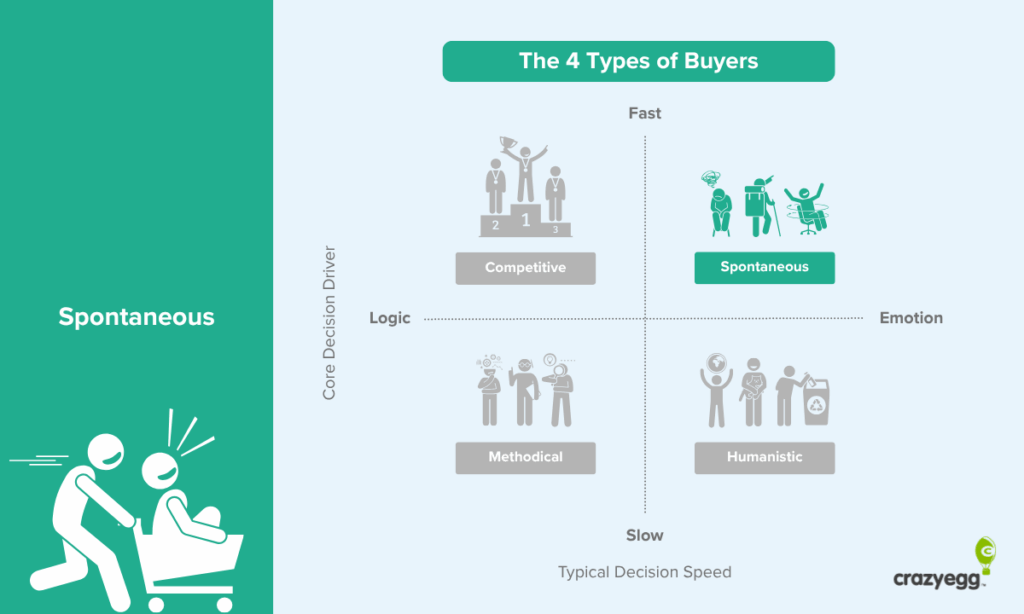
Spontaneous buyers are driven by emotion and excitement rather than logic. They want to feel good about their purchase and they want it now. As the Eisenbergs note, “they are available, flexible, and engaged in a personal quest for action and impact, which defines who they are.”
These are the people who make quick decisions based on gut feelings. They’re drawn to what’s new, interesting, and visually appealing. They trust their instincts over analysis and see overthinking as a waste of time. If something feels right, they’ll act immediately.
The personal touch can go a long way with spontaneous buyers. Anything that shows you understand what they want and can help them meet their needs immediately is good. You don’t have to satisfy the worlds’ objectives, just theirs.
What spontaneous buyers care about:
- Does this feel exciting and new?
- Can they get it right now?
- Will it make them feel good?
- Is the process fast and easy?
Spontaneous buyers prioritize how a purchase makes them feel over whether or not it’s the objective best purchase. They despise friction in the process, seeking to be delighted as opposed to educated.
How to sell to spontaneous buyers:
Use persuasion techniques that create excitement and urgency. Make them feel like they are missing out by not acting now. Keep everything fast, fun, and free of friction.
Emphasize:
- Visual appeal: bright colors, dynamic images
- Urgency, scarcity, time-sensitive offers
- Simplicity and immediate action
- Loss aversion, FOMO
- Emotional over statistical benefits
- Instant access or fast delivery
Avoid:
- Long explanations or technical details
- Extra steps in the purchase process
- Asking for too much info upfront
- Boring design, neutral colors
- CTAs like “Learn more”
Real-world example of selling to spontaneous buyers:
Loom is a screen recording software that makes it easy for anyone to create and share short videos. Their freemium version is excellent (I can say from experience) and the brand has grown exponentially by getting people to install the app and start sharing videos right away.
To see how Loom has capitalized on spontaneous buyers, look no further than their company’s homepage.
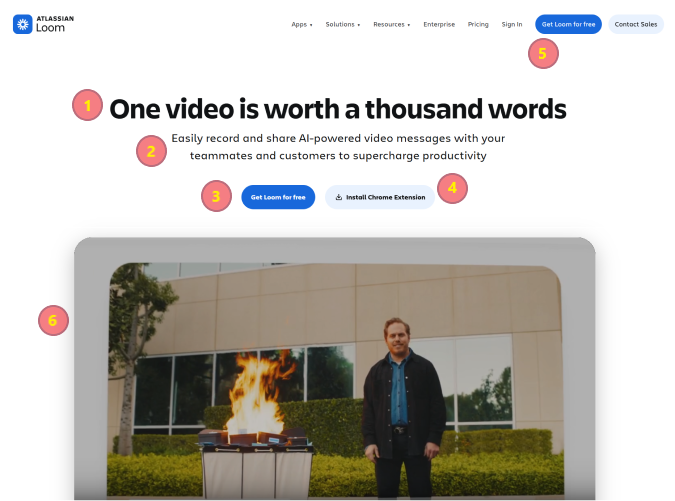
- Headline: “One video is worth a thousand words”
- Subhead: “Easily record and share AI-powered video messages with your teammates and customers to supercharge productivity”
- Primary CTA: “Get Loom for free”
- Secondary CTA: “Install Chrome Extension”
- Primary CTA repeated in the navigation menu
- Exciting video with tons of action
The headline is a simple twist on the recognizable phrase “a picture is worth a thousand words,” which means the audience doesn’t have to spend a ton of mental energy figuring out the message.
And that message is developed quickly in the subhead, using words like “easily” and phrases like “AI-powered” and “supercharge productivity.” There’s no deep dive into the technicalities here, it’s all about the fun vibes and what users can start doing immediately.
The primary CTA notes that it’s free to get started, and that CTA is repeated exactly in the sticky navigation menu, so people can click through regardless of whether they start to scroll. The secondary CTA gives people another low-effort, minimal-friction option to get started.
It’s all brought together in an action-packed video that contrasts the excitement of their product, and the defects with old, slow, and worn out methods of communication. It literally closes with a guy setting a trashcan on fire, where he says “that was the past, and this is the future.”
For spontaneous buyers drawn to new and exciting things, Loom delivers very well.
Type 4: Humanistic Buyers
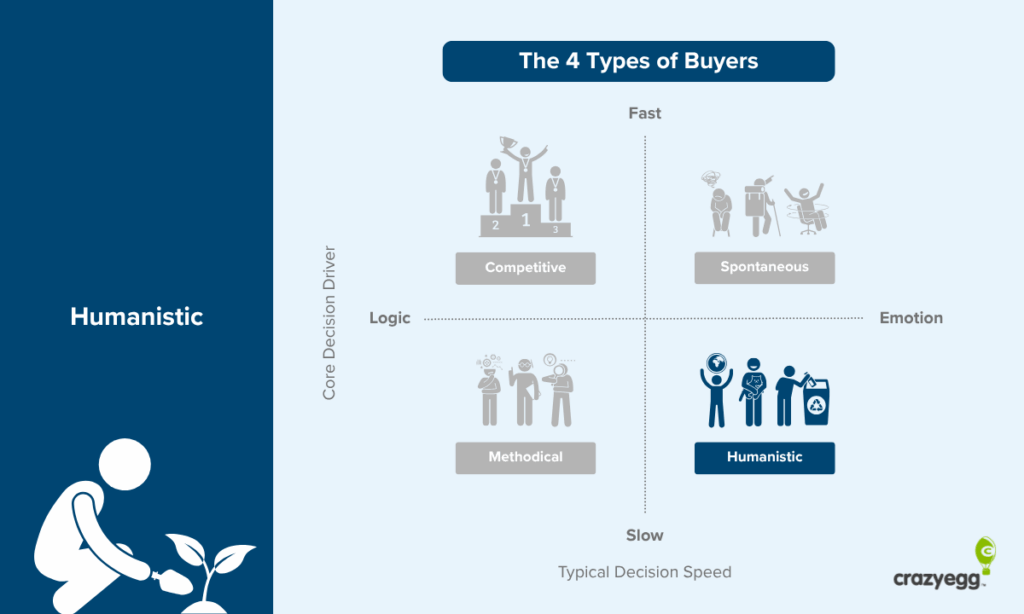
Humanistic buyers are driven by emotion, values, and human connection. They want to support businesses that align with their beliefs and contribute positively to the world. They research your company’s mission, values, and social impact.
These are the people who tend to put the needs of others ahead of themselves. The selfless types who are slow to make a decision and care greatly about its impact on everyone else. They tend to value consensus, testimonials, and the bigger picture.
They want to see real people, hear authentic stories, and feel like they’re part of something meaningful. For them, purchasing is about starting a relationship with the brand, and the people behind it are as important as the product itself.
Humanistic buyers are thought to make up about 10-15% of the buying spectrum, but in many industries, it’s thought to be the fastest-growing segment.
What humanistic buyers care about:
- Can they trust the individuals behind the brand?
- Do they share the same values?
- How will their purchase impact others?
- Will they feel good about making a purchase?
Humanistic buyers value authenticity, transparency, and social responsibility. They want to support businesses that align with their ethics. What matters isn’t logic so much as a sense that you mean what you say and will treat people decently, inside and outside your company.
How to sell to humanistic buyers:
Communicate your mission and values clearly. Humanize your brand by showing the people who make it run. Invite customers to feel part of a community rather than just a transaction.
Emphasize:
- Your company’s goals and purpose beyond profit
- Social impact, sustainability, and ethical practices
- Social proof like user-generated content and authentic testimonials
- Community and belonging
- How purchases help others or contribute to something bigger
- Real stories from real people behind the brand
Avoid:
- Corporate, impersonal language
- Data without a human context
- Language focused on individual gain
- Aggressive sales tactics
- Ignoring social concerns
Real-world example of selling to humanistic buyers:
Patagonia is a high-end retailer that sells outdoor clothing and gear. In my opinion, they set the gold standard for humanistic buyer marketing, building their multi-billion dollar brand around environmental activism and ethical manufacturing.
One look at their homepage, and you can see they have found success by showing buyers that they really care about the bigger picture.
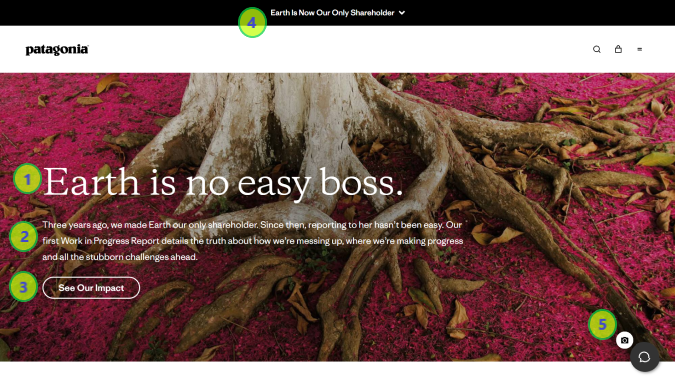
- Headline: “Earth is no easy boss.”
- Subhead: “Three years ago, we made Earth our only shareholder. Since then, reporting to her hasn’t been easy. Our first Work in Progress Report details the truth about how we’re messing up, where we’re making progress and all the stubborn challenges ahead.”
- CTA: “See Our Impact”
- Banner: “Earth is now our only shareholder”
- Camera icon: Expands to provide image attribution
You simply cannot visit Patagonia’s site without discovering the company’s mission and what they care about. It’s in your face, sure, but it shows they put their profits second to their concerns for the environment.
All of the copywriting is focused on the planet, sustainability, and how the brand is working toward these bigger goals. Customers aren’t just getting outdoor gear, they’re contributing to a company culture that gives back.
I thought a particularly nice touch was the camera icon overlaying the photo, which expands to give proper attribution to the photographer and where they took the image. Which other brands do you know that go out of their way to credit photographers? What does that say about Patagonia?
For a humanistic buyer who’s got misgivings about purchasing a $400 puff jacket, Patagonia has made sure that they know every dollar goes toward something bigger.
Which Types of Buyers Are On My Website?
Let’s go through two simple strategies that can help you figure out which types of buyers are the most active on your site so that you can steer your design to appeal to them.
Start with conversion data
Look at where your conversions are happening. It’s the strongest signal you have to understand which buyers are really willing to take the next step forward with your brand.
Some simple questions you can ask:
- Which pages have the highest conversion rate?
- Which CTAs get the most clicks?
- Which headlines perform the best in A/B tests?
If you find that a lot of conversions are happening above the fold on your home page, odds are you have the buyer types that like to move quickly (spontaneous/competitive).
From there you could analyze which CTA text and headlines are performing the best. The competitive buyers tend to respond better to words like “fastest” and “best”, whereas the spontaneous buyers are drawn towards the low-friction, time-crunch, and FOMO oriented copy, like “Join 50,000 happy users for free with this limited-time offer.”
On the other hand, if you find that pricing pages or detailed comparison pages tend to be where people convert, then you probably have methodical buyers. If it’s the customer testimonials and case studies that convert, odds are your buyers skew towards the humanistic side.
Validate with behavioral data
With a good idea of which buyer types are actually signing up and buying from you, it makes sense to test your hypothesis by digging into website behavior.
Here you want to look at web analytics for the people that convert to see if their digital footprint aligns with your assumptions.
For example, if you think that methodical buyers are your primary revenue driver, check to make sure that people who convert are:
- Downloading resources like case studies and whitepapers
- Returning to your site multiple times
- Visiting 7-10+ pages
- Spending 5+ minutes on your site per session
- Engaging heavily with pricing and comparison pages
If this profile seems to fit, then you probably do have a lot of methodical buyers on your site and you can steer your content creation in service of appealing to them. More white papers, more in-depth comparison pages, more website copy that encourages people to dig deeper and explore.
On the other hand, if the engagement metrics reveal that the people who convert tend to have shorter sessions (1-3 minutes), fewer sessions, or aren’t viewing as many pages, you might have more competitive/spontaneous buyers than you initially thought.
Or maybe they are spending a lot more time reading customer testimonials and your About Us page. In that case, your buyers might be more humanistic than the conversion data first indicated.
Beyond the basic web analytics, you can employ heatmaps to see where people are spending time on individual pages, or session recordings to watch how they move through your site.
The goal with this type of analysis is to see which types of buyers you should prioritize. You shouldn’t steer everything towards one type, but you do want to create a page experience that best serves the people who are most likely to buy.
How To Sell to Multiple Buyer Types
You can and should speak to all four of the fundamental buyer types on your site. That said, trying to please everyone within the first impression is how you wind up with a site that says nothing to anyone.
Here’s what works: prioritize your best buyers above the fold, then speak to the other types throughout the page with a message that doesn’t conflict from what you’ve said before.
Here’s an example. Let’s say that you have identified that competitive buyers drive the majority of your revenue.
Above the fold, I’d go with a strong headline that positions your brand as the best at what you do. The top choice, the most trusted, the highest ROI, and so on.
In the subhead and copy, build on that idea by explaining exactly how your product differentiates itself from the competition. The competitive buyers arrive with a sense of the market and their options, so you can speak directly to what they already know.
Don’t dilute your message here with emotional appeals or lengthy explanations. Just give it to people straight, with proof that is easy to digest immediately.
Further down the page, you can start to give more information that satisfies your methodical buyers. The feature breakdowns, the detailed comparisons.
You can also weave in some customer stories or other types of social proof that will speak to your humanistic buyers. So long as this content resonates with what came before, it’s probably not going to turn off competitive buyers that decide they want to dig a little bit deeper.
Example site that speaks to all four types of buyers
Gusto is a payroll service I have used with multiple employers that leans into the spontaneous buyer above the fold, but not without making small overtures toward the other buyer types.
Within a scroll or two, Gusto has successfully put forward a coherent brand identity that gives each type something to grab on to.
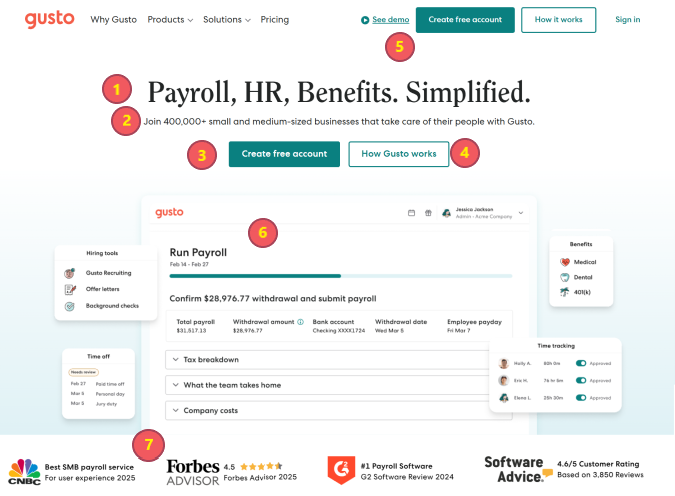
- Headline: Payroll, HR, Benefits. Simplified.
- Subhead: Join 400,000+ small and medium-sized businesses that take care of their people with Gusto.
- Primary CTA: “Create free account”
- Secondary CTA: “How Gusto works”
- Primary + Secondary CTA repeated in the navigation menu
- Interface preview shows the platform
- Trust signals and social proof from reputable third parties and independent user reviews.
Gusto has done a lot of work to make it easy to take the next step and increase the conversion rate. A headline and subhead focused around simplicity with an obvious primary CTA to get started. For spontaneous buyers, this is great.
But the secondary CTA speaks directly to the methodical buyers who want to understand how it works. And the text of the subhead explicitly calls out how users will be able to “take care of their people with Gusto,” which ought to resonate with the humanistic buyers.
Competitive and methodical buyers will also be interested in the preview of the Gusto interface to see how a payroll service is actually going to make their lives easier. Competitives will also like to see the social proof and trust signals, which include a “#1 rating” from G2 and a 4.5-star rating from Forbes Advisor.
I doubt that Gusto believes any of their buyers are going to be super spontaneous about jumping to a new payroll software. It’s a decision that takes time and signoff from a few different departments.
But the point of this page is to get people into their website funnel, to get them interested in Gusto, and to remember the brand. Even the most spontaneous buyers are probably not going to sign up right away, but they need people to take the next step and learn a little bit more about the platform.
No matter which buyer type lands on this page, they will find something that speaks to them, and a reason for exploring further.




